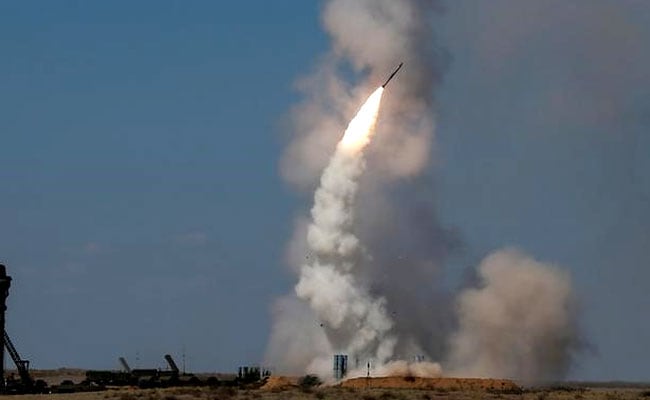After Malaysia Airlines flight MH370 disappeared from the face of the earth on March 8, 2014, aviation authorities around the world took immediate action to require all aircraft to install technology to prevent similar tragedies from happening.
But experts say a decade after the Malaysian plane disappeared along with all 239 passengers on board, continued delays and reluctance from the aviation industry have slowed progress in implementing new safety standards, leading to concerns that safety lapses could lead to another MH370-like disaster. Mysterious disappearances.
Investigators still don’t know exactly what happened to the plane and a massive £103m multi-national search in the southern Indian Ocean where it is believed to have crashed has turned up nothing.
One of the biggest obstacles in the search is that investigators don’t know where to look for MH370 in the Indian Ocean. The plane’s transponder, which communicates with air traffic control, stopped transmitting the position of the Beijing-bound passenger plane about three minutes after the plane made its last radio call to Kuala Lumpur before leaving Malaysia.

Military radar detected the plane turning around and flying over the Andaman Sea before disappearing, and satellite data showed it continued flying for several hours, possibly until it ran out of fuel.
Speculation about the plane’s whereabouts has sparked debate online and fueled conspiracy theories, many surrounding the plane’s captain, Zaharie Ahmad Shah. Investigators said there was nothing suspicious about the captain’s background, training or mental health, but did not rule out the possibility that the plane was deliberately diverted from its route.
This prompted the International Civil Aviation Organization (ICAO), the United Nations agency that sets global aviation standards, to announce new rules that would allow real-time tracking of aircraft to “ensure similar disappearances never happen again.”
According to the Global Aviation Distress and Safety System (GADSS), large commercial aircraft are required to carry beacons that operate underwater and technology that automatically tracks their position every 15 minutes.
The final stage of GADSS (arguably the crucial stage) is Autonomous Distress Tracking (ADT), which transmits the aircraft’s position every minute when it is in trouble, allowing it to be tracked in real time and, in the event of an accident, At this time, the aircraft can be tracked in real time. After the accident, the accident site was reduced to a radius of six nautical miles.
ICAO initially set a deadline for all new aircraft to be equipped with ADT from January 2021, but was delayed for two years This comes after the UN body’s Air Navigation Commission found the industry “is not ready and therefore countries will not be able to realistically meet the original deadline”.

ICAO then pushed back the deadline by a further two years, to January 2025, amid reports that the industry needed more time after the Covid-19 pandemic caused unprecedented disruption to the aviation industry.
ADT systems are not a legislative requirement and implementation timelines are determined by each country. Although the 15-minute tracking standard introduced in 2018 is now widely adhered to globally, many countries still do not have national regulations in place to support ICAO’s one-minute standard for distress operations.
Colin Weir, chief executive of Australian aviation safety consultancy Flight Safety and a former South African Air Force pilot, believes the deadline will be extended further and accuses the aviation industry of compromising safety in its cost-cutting drive.
“There is absolutely no way it will be implemented by 2025,” he told reporters. I. “ICAO said this has to happen and the industry – which is very powerful – said they didn’t have the money and started creating these delays.”

Mr Weir said the measure should apply to existing aircraft, saying: “You can’t just give grandfather rights to an old aircraft carrying 300 passengers, you have to enforce it across the board.”
Dai Whittingham, chief executive of the UK Flight Safety Council and a former RAF pilot, believes airline operators may struggle to weigh up the cost of enhanced safety measures such as ADT against the need to reduce operating expenses. Find the advantages of implementing such a system.
He speculated that a one-minute tracker would only be really useful in special circumstances, such as MH370, an extremely rare event.
“There is general resistance in the industry to taking this data transfer step, first and foremost because you are unlikely to get any meaningful data out of it,” he told us I.
“The only time it worked was with MH370, it’s very rare and if we take hudson river landing, which is almost akin to saying ‘we now want aircraft to be certified so they can float’. “
He noted that such systems would add weight to the aircraft and increase carbon emissions, and “nobody wants to do that.”
“When you consider the complexity, the cost, the weight, it’s like a belt and a brace – so you’re burning more fuel – for a highly unlikely event.”
ICAO insists The benefits of increasing the effectiveness of search, rescue and recovery services “will offset any costs”.
Dozens of ships and aircraft from various countries began searching for MH370 in the South China Sea between Malaysia and Vietnam before moving to the Andaman Sea and the Indian Ocean.
Australia then joined Malaysia and China in leading the largest and most expensive underwater search ever, using aircraft, ships equipped to pick up sonar signals and robotic submarines to cover 120,000 square kilometers (46,000 square miles) of the ocean floor off Western Australia. .
On Monday, Malaysian Prime Minister Anwar Ibrahim said his government was willing to reopen the investigation if there was compelling new evidence.
Our position is that if there is a compelling case, if there is evidence that reopening is warranted, we would certainly be happy to reopen,” he said.
“Whatever needs to be done must be done.”
Previously, Malaysian Transport Minister Anthony Loke said that the US deep-sea exploration company Ocean Infinity, which had participated in the unsuccessful search for the plane in 2018, had been invited to discuss its new search proposal of “no discovery, no charge”.
Ocean Infinity CEO Oliver Plunkett said the company submitted a proposal to the Malaysian government and “hopes to resume search efforts as soon as possible”.
Ocean Infinity said in a statement: “Searching for MH370 and providing solutions to all those involved in the crash has been our ambition since it left the southern Indian Ocean in 2018.”
“Since then, we have focused on driving the transformation of our maritime operations; innovating through technology and robotics to further enhance our ocean search capabilities.”
Mr Weir said the real-time aviation tracking system existed long before the disappearance of MH370, and if the system was installed on the plane, it could cause a lot of pain to the families of the victims.
“If you look at the grief that was caused by that accident, all the families and all the people involved and all the heartache because the system wasn’t fully functioning, it’s ridiculous,” he said.
Follow us on Google news ,Twitter , and Join Whatsapp Group of thelocalreport.in

















